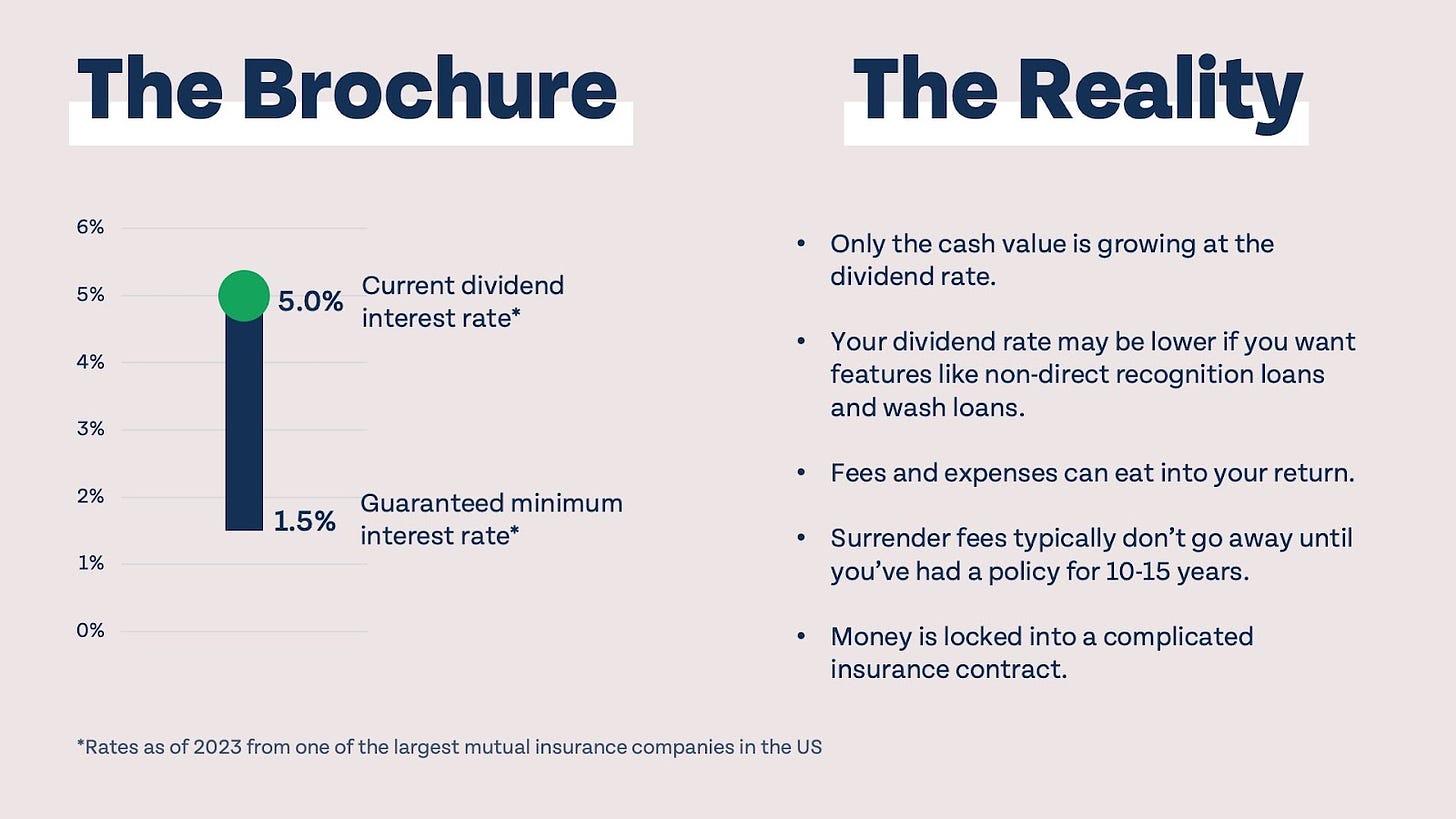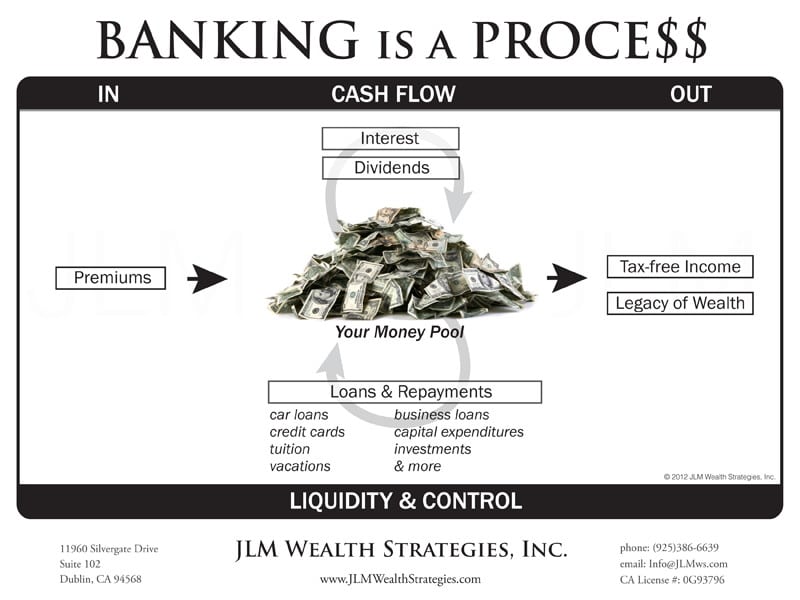All Categories
Featured
Table of Contents
Okay, to be reasonable you're truly "financial with an insurance business" rather than "banking on yourself", yet that idea is not as easy to offer. It's a bit like the concept of getting a home with cash money, then borrowing versus the home and putting the cash to function in an additional financial investment.
Some people like to speak about the "velocity of cash", which generally indicates the same point. That does not imply there is nothing beneficial to this idea once you get past the marketing.
The entire life insurance policy industry is tormented by excessively pricey insurance coverage, massive compensations, shady sales practices, low prices of return, and badly informed customers and salesmen. But if you intend to "Bank on Yourself", you're mosting likely to need to wade right into this sector and really acquire whole life insurance. There is no alternative.
The assurances fundamental in this product are important to its feature. You can obtain versus many sorts of money value life insurance coverage, however you should not "financial institution" with them. As you acquire a whole life insurance policy policy to "financial institution" with, bear in mind that this is a completely separate section of your economic strategy from the life insurance coverage section.
As you will see below, your "Infinite Financial" policy actually is not going to dependably give this crucial monetary feature. An additional trouble with the truth that IB/BOY/LEAP counts, at its core, on a whole life policy is that it can make purchasing a policy bothersome for numerous of those interested in doing so.
A Life Infinite
Harmful leisure activities such as diving, rock climbing, skydiving, or flying also do not mix well with life insurance coverage items. The IB/BOY/LEAP advocates (salesmen?) have a workaround for youbuy the policy on somebody else! That might exercise fine, since the point of the policy is not the fatality benefit, yet keep in mind that buying a policy on minor children is extra expensive than it must be given that they are generally underwritten at a "typical" price rather than a chosen one.

Most plans are structured to do one of 2 points. A lot of frequently, plans are structured to make best use of the compensation to the representative offering it. Cynical? Yes. It's the truth. The compensation on an entire life insurance coverage policy is 50-110% of the very first year's costs. Sometimes plans are structured to maximize the survivor benefit for the premiums paid.
The rate of return on the plan is extremely essential. One of the best methods to make best use of that factor is to obtain as much cash money as feasible into the policy.
The finest way to boost the rate of return of a policy is to have a fairly tiny "base policy", and after that put more cash money into it with "paid-up additions". Instead of asking "How little can I place in to obtain a particular survivor benefit?" the question becomes "How a lot can I legally took into the plan?" With even more money in the plan, there is even more cash value left after the expenses of the fatality advantage are paid.
An extra benefit of a paid-up enhancement over a regular premium is that the payment price is reduced (like 3-4% instead of 50-110%) on paid-up additions than the base policy. The less you pay in compensation, the greater your price of return. The rate of return on your cash worth is still going to be unfavorable for some time, like all cash money value insurance coverage plans.
It is not interest-free. It may set you back as much as 8%. Many insurance coverage companies just supply "straight acknowledgment" loans. With a direct acknowledgment loan, if you borrow out $50K, the returns price related to the money value every year only puts on the $150K left in the policy.
Dbs Bank Visa Infinite Debit Card
With a non-direct acknowledgment loan, the firm still pays the same returns, whether you have "borrowed the cash out" (technically against) the plan or otherwise. Crazy? Why would they do that? That knows? They do. Usually this feature is combined with some much less useful facet of the plan, such as a lower dividend rate than you might obtain from a policy with straight acknowledgment fundings (what is infinite banking life insurance).
The companies do not have a source of magic cost-free cash, so what they give up one location in the plan need to be taken from another place. If it is taken from a feature you care less about and place into a feature you care extra around, that is a great thing for you.
There is another essential attribute, normally called "laundry fundings". While it is wonderful to still have actually returns paid on cash you have gotten of the policy, you still have to pay rate of interest on that financing. If the dividend rate is 4% and the car loan is charging 8%, you're not precisely coming out in advance.
With a wash loan, your car loan interest rate coincides as the reward price on the plan. While you are paying 5% passion on the lending, that passion is totally balanced out by the 5% returns on the car loan. So in that respect, it acts much like you took out the cash from a savings account.

5%-5% = 0%-0%. Same same. Hence, you are now "financial on yourself." Without all three of these variables, this policy simply is not going to work quite possibly for IB/BOY/LEAP. The largest problem with IB/BOY/LEAP is individuals pressing it. Almost all of them stand to make money from you getting into this principle.
In reality, there are several insurance coverage agents chatting concerning IB/BOY/LEAP as a feature of whole life who are not actually selling plans with the essential attributes to do it! The issue is that those that recognize the principle best have a substantial conflict of passion and normally blow up the benefits of the principle (and the underlying policy).
Nelson Nash Bank On Yourself
You should compare loaning versus your plan to withdrawing cash from your savings account. No money in money worth life insurance coverage. You can place the cash in the financial institution, you can spend it, or you can purchase an IB/BOY/LEAP plan.
You pay taxes on the interest each year. You can save some more money and placed it back in the financial account to begin to earn rate of interest again.
When it comes time to get the watercraft, you market the investment and pay tax obligations on your long term funding gains. You can conserve some even more money and acquire some even more investments.
The cash value not used to spend for insurance coverage and payments grows for many years at the dividend price without tax obligation drag. It starts out with negative returns, yet ideally by year 5 or two has actually damaged also and is expanding at the reward rate. When you go to acquire the boat, you obtain against the plan tax-free.
Infinite Banking Concept Canada
As you pay it back, the cash you paid back starts expanding once again at the dividend rate. Those all job rather in a similar way and you can contrast the after-tax rates of return. The fourth option, however, works really differently. You do not save any type of cash neither purchase any kind of kind of investment for many years.
They run your credit rating and offer you a loan. You pay rate of interest on the borrowed cash to the bank up until the lending is paid off.
Latest Posts
Banking Concepts
How To Start A Bank: Complete Guide To Launch (2025)
Bank On Yourself: How To Become Your Own Bank